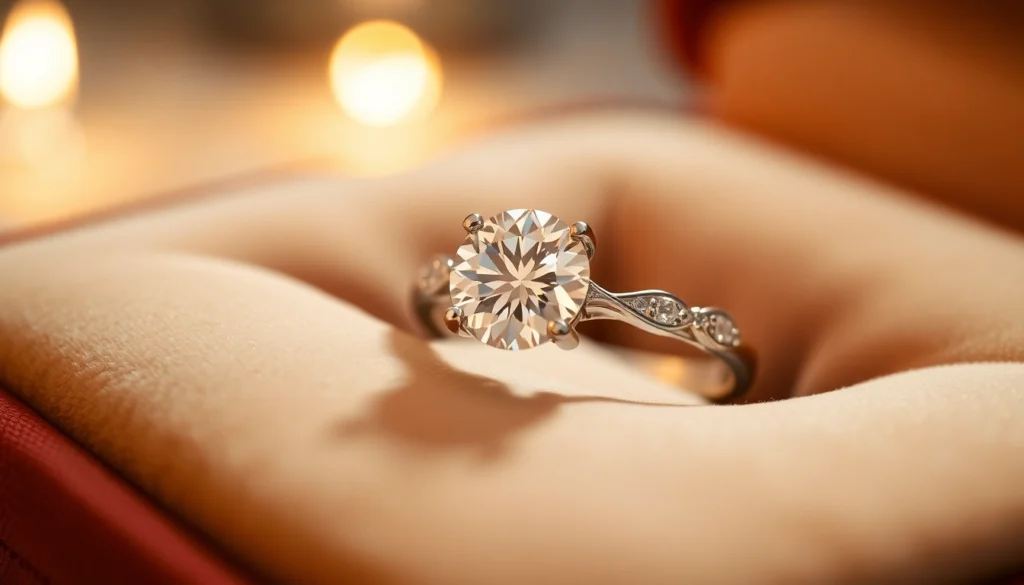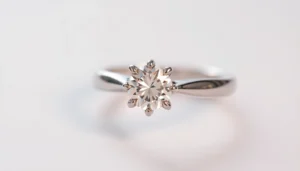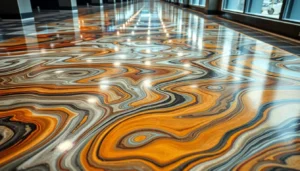Elevate Your Love with Stunning Engagement Rings with Diamond Designs

Understanding Engagement Rings with Diamond: Styles and Significance
An engagement ring is more than a piece of jewelry; it is a timeless symbol of love, commitment, and new beginnings. Among the myriad options available, engagement rings with diamond stand out as the most classic and universally cherished choice. The allure of a diamond’s brilliance and symbolism makes it a preferred option for couples embarking on life’s most meaningful journey together. To select the perfect engagement ring, understanding the different styles and the underlying significance of diamonds can help you make an informed decision that reflects both your personal style and the depth of your love.
Traditional vs. Modern Engagement Ring Styles
Engagement rings have evolved significantly over centuries, blending tradition with contemporary trends. Traditional styles often feature solitaire designs—single diamonds set prominently on a simple band—exuding timeless elegance. Classic styles also include three-stone rings, symbolizing the past, present, and future, and intricate vintage-inspired designs that incorporate filigree work, engravings, and milgrain detailing, evoking romantic nostalgia.
Conversely, modern engagement rings prioritize innovation, comfort, and personalization. These include minimalist bands, asymmetric settings, and the use of unconventional materials like tungsten or ceramic alongside diamonds. Modern styles often embrace unique cuts and settings that enhance the diamond’s sparkle while aligning with individual tastes. For example, halo settings, which surround the center stone with smaller diamonds, are popular for their brilliance and visual impact.
The choice between traditional and modern styles ultimately reflects personal preferences—whether you cherish classical elegance or contemporary chic—and influences how the ring complements your lifestyle and fashion identity.
The Symbolism Behind Diamond Engagement Rings
Diamonds have long been associated with strength, purity, and eternal love. Their unique physical qualities—exceptional hardness and brilliance—symbolize durability and resilience in a relationship. The tradition of giving a diamond engagement ring dates back to the 15th century, when European aristocracy began adorning their loved ones with these precious stones as a token of commitment.
Additionally, the most iconic symbolism of a diamond ring is its “eternity” aspect. The unbreakable nature of a diamond mirrors the enduring bond between partners. Some cultures assign specific meanings to different diamond cuts or settings; for instance, a round brilliant diamond signifies completeness, while a princess cut offers modern grace. Understanding these symbols helps couples select a ring that embodies their personal story and aspirations.
Moreover, choosing ethically sourced or environmentally responsible diamonds has become a meaningful aspect for many, aligning their values with their symbol of love.
Popular Cuts and Settings for Engagement Rings with Diamond
The cut of a diamond is fundamental to its brilliance and overall aesthetic. The most popular cuts include:
- Round Brilliant: Known for maximum sparkle, this cut features 58 facets designed to reflect light brilliantly.
- Princess Cut: A contemporary square shape offering a brilliant sparkle with a modern edge.
- Cushion Cut: Rounded corners and large facets create a romantic, vintage feel.
- Oval and Marquise: Elongated shapes that can make fingers appear slender and longer.
Settings complement the cut and influence the ring’s overall appearance. Popular settings include:
- Solitaire: A single diamond on a plain band, emphasizing simplicity and brilliance.
- Halo: Encircles the center stone with smaller diamonds, enhancing size and sparkle.
- Pavé: A band encrusted with tiny diamonds, adding continuous shimmer.
- Three-Stone: Symbolizes past, present, and future, often with smaller side stones.
Choosing the right cut and setting depends on personal style preferences, lifestyle considerations, and the significance you wish to convey.
Choosing the Perfect Engagement Ring with Diamond: Key Factors
Assessing Diamond Quality: The 4 Cs
When selecting a diamond, quality assessment hinges on the famous “4 Cs”: Cut, Color, Clarity, and Carat weight. Understanding and balancing these factors ensures you choose a ring that offers the best value and visual appeal.
- Cut: The quality of the cut affects how well the diamond reflects light. An excellent cut maximizes brilliance and fire.
- Color: Graded from D (colorless) to Z (noticeable color), a near-colorless diamond often offers the best value.
- Clarity: Evaluates internal inclusions and external blemishes. Flawless or Internally Flawless diamonds are rare but may be beyond budget; VS1 and VS2 provide a good balance.
- Carat: The weight and size of the diamond. Larger diamonds are rarer and more expensive, but quality should not be sacrificed for size alone.
Expert advice involves prioritizing these Cs based on personal preferences and budget constraints, often balancing a slightly lower clarity or color for a higher cut quality or larger size.
Matching Ring Style with Personal and Fashion Preferences
The perfect engagement ring should resonate with your individual style and lifestyle. For those who prefer timeless elegance, classic solitaire or vintage-inspired designs might be ideal. If you favor contemporary fashion, sleek minimalistic bands or asymmetrical settings may appeal more.
Lifestyle considerations also influence choice. For active individuals or those with hands-on jobs, a low-profile setting reduces risk of damage or snagging. For fashion-forward brides, stacking multiple bands or incorporating colored accent stones can create a distinctive look.
Collaborating with a jewelry designer can help tailor the ring to your unique preferences, ensuring it complements your personality and wardrobe for years to come.
Design and Customization Options for Engagement Rings with Diamond
Handcrafted vs. Factory-Made Designs
Custom craftsmanship offers an opportunity to create a one-of-a-kind ring tailored specifically for you. Handcrafted rings often feature intricate detailing, personalized engravings, and innovative settings that reflect individual stories. These pieces tend to be more unique and carry a sense of artisanal quality.
Automation and modern manufacturing techniques have made factory-made rings more accessible and consistent in quality. These designs often benefit from advanced technology, ensuring precise cuts and settings at a competitive price point. While they may lack the artisanal uniqueness, many high-quality factory brands offer customization options to incorporate personal touches.
The decision depends on your desire for uniqueness versus affordability and convenience.
Personal Touches: Engravings and Unique Settings
Adding personal engravings inside the band can symbolize intimate moments, initials, or important dates. Unique settings, such as tension or flush mounts, can lend a modern flair or emphasize certain qualities of the diamond.
Customization extends to choosing unusual metal combinations like rose gold, platinum, or layered metals. Incorporating meaningful symbols or customizing the ring’s engraving ensures the piece resonates deeply with your love story.
These personalized elements elevate a standard design into an heirloom-worthy keepsake.
Caring for Your Engagement Ring with Diamond: Maintenance and Protection
Cleaning and Inspection Tips
Proper maintenance preserves the ring’s brilliance and structural integrity. Regular cleaning with gentle solutions—such as warm water, mild soap, and a soft brush—removes oils, dirt, and tarnish that dull its sparkle. Ultrasonic cleaners are effective but should be used cautiously, especially for delicate settings.
Routine inspections by a professional jeweler are crucial to check for loose stones, worn prongs, or other potential issues. Scheduling annual or bi-annual inspections ensures early detection of damages, preventing loss or further deterioration.
Insurance and Security Measures
Given the value and sentimental importance of engagement rings, insuring your jewelry with a reputable provider protects against theft, loss, or damage. High-definition photographs, appraisals, and receipts help streamline the insurance process.
Security measures at home include safes, discreet storage, and alerting local security services if necessary. For added peace of mind during travel, consider carrying documentation or temporarily replacing the ring with a less valuable item from your collection.
Buying Engagement Rings with Diamond: Where to Shop and What’s Trending
Trusted Retailers and Online Platforms
When purchasing an engagement ring with a diamond, trustworthiness is paramount. Reputable jewelers with transparent grading policies, certified diamonds, and clear return/exchange policies are ideal. Online platforms have gained popularity for their competitive prices, extensive selections, and educational resources. Look for suppliers with GIA or AGS certification, which guarantees diamond quality and authenticity.
Physical stores offer personalized service, allowing you to see and try on rings before purchase, while online shopping often provides detailed images, videos, and virtual consultations to aid decision-making.
Latest Trends in Engagement Ring Designs
Current trends favor minimalist and sustainable designs that emphasize craftsmanship and ethical sourcing. Rose gold and other warm metals remain popular, paired with unconventional diamond cuts or accent stones for a distinctive look. Double or triple-band rings, stackable styles, and vintage revival designs are also trending.
Technological innovations such as 3D printing and augmented reality enable bespoke customization, making each ring a true reflection of the wearer’s personality.
Tips for Ensuring Authenticity and Quality
To secure a genuine, high-quality engagement ring, always request certification from recognized laboratories like GIA or AGS. Verify the dealer’s reputation through reviews, industry affiliations, and accreditation.
Insist on detailed diamond grading reports and ask about the sourcing origins to confirm ethical practices. Comparing prices across different vendors and understanding market standards will help you make confident, value-driven decisions.






